It’s 7 am on Monday and I’m back in the kitchen at culinary school well before sunrise. I find myself wielding a butcher’s knife, chopping a huge hunk of veal into three smaller chunks (I’m not sure exactly what cut of meat this was, so let’s assume hunk and chunk are suitable technical terms).
This whole culinary school thing is not for the faint of heart.
I can think of gentler ways to start the week, but all jokes aside, it felt great to dive head-first back into the kitchen after my two-week pastry detour. It was nice to use my knives for something more than peeling apples.
Back to the veal — I was prepping for our first recipe of the week, a brown veal stock or fond brun de veau. Fonds are essential to French cooking, serving as the base for many mother sauces. They can be either brown or white — the difference is that brown stock requires roasting the bones, sinewy meat, and aromatic vegetables in the oven (extra flavor!) Everything is transferred to a large copper pot with tomatoes, deglazed with cold water, and simmered into submission for 3+ hours.
Next, I was off to pick up an adequate copper pot at the central dishwashing department on our floor. Each one of these copper pots and pans goes for a few hundred euros — I won’t do the math, but I’m pretty sure that this collection is worth more than my tuition for culinary school. The dishwashers are the guardians of this small fortune and we thank them for their service in the form of leftovers.
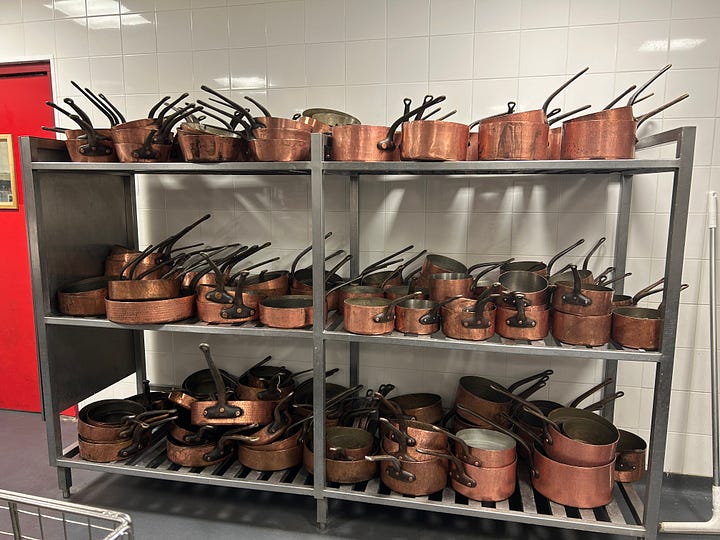
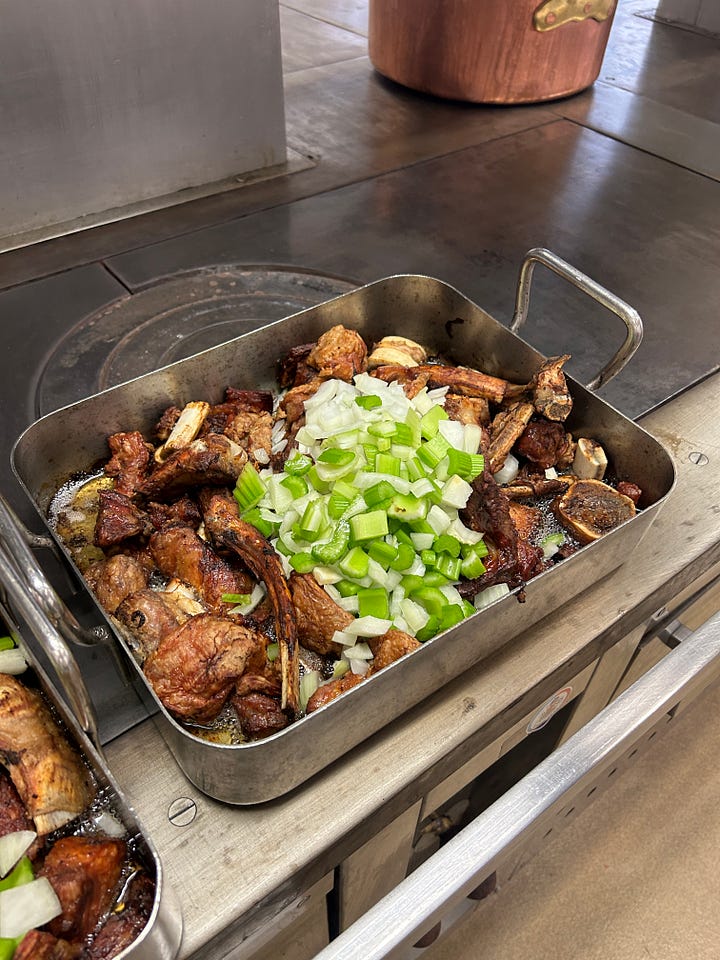
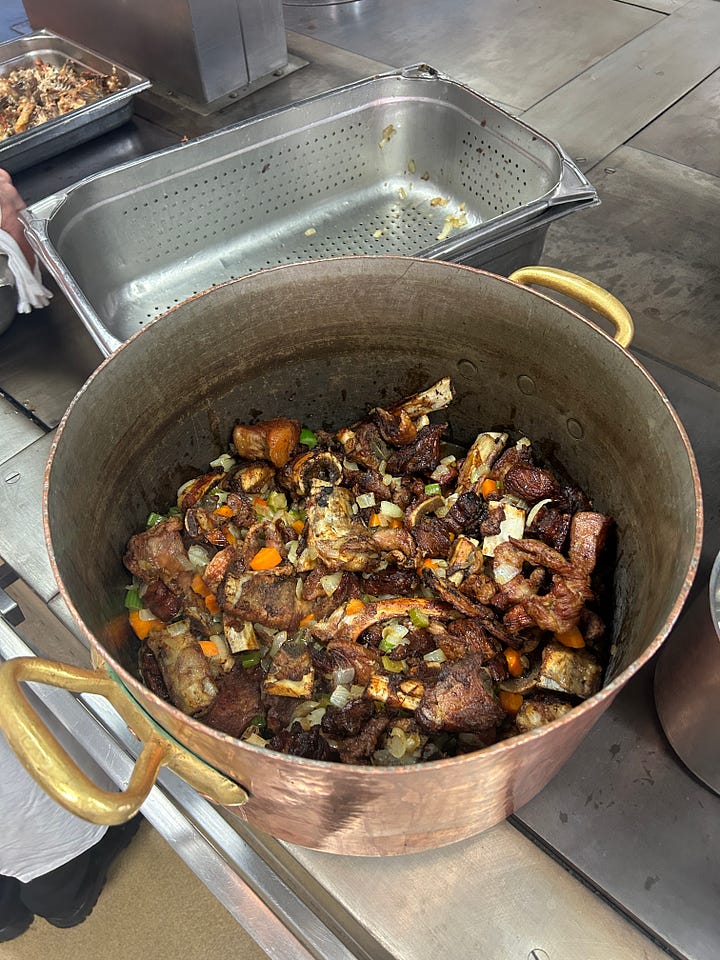

After a few hours of reducing the stock and skimming off impurities, the stock is strained and can be used as a base for mother sauces like Sauce espagnole. The stock can also be reduced until it becomes a demi-glace (the “queen of sauces”). Further reduction gives way to an even more concentrated glace, which can be added to nearly finished sauces for additional depth. In short, veal stock is liquid gold.
What’s an aspic anyway?
My program intentionally focuses on traditional French cooking, meaning that we’ll cover several recipes that are out of fashion and rarely seen on menus these days. With the goal of teaching us the basics and the techniques required to prepare them, we’ll occasionally embark on time travel expeditions through French culinary history.
This week, we traveled to the 1960s and tackled the aspic.
An aspic is essentially a gelatinized stock that’s been set in a mold. You can still find aspics at traditional Parisian traiteurs, usually in the form of oeuf en gélee, or eggs and ham in gelatin. Some terrines will also feature gelatinized broth. Not to yuck anyone’s yum, but I can’t be the only one who finds the idea truly unappetizing.
In order to prepare our aspic, we needed beef broth — broth is different from stock in that it uses meat instead of bones. We placed several cuts of beef and a hoof (the original collagen supplement) in a large pot of cold water with aromatic vegetables and set it to simmer for 3 hours. Next, the broth is strained and clarified into a consommé. The beef (overcooked and underseasoned) was diced into cubes; an obscene number of gelatin sheets were added to the broth.
We were ready to assemble our aspic, starting with a layer of gelée at the bottom of a mold. Next, artfully arranged vegetables and herbs, followed by the diced beef and more gelée before being set in the fridge, turned over, and plated. We followed a similar process for our beef terrine, starting with cooked leeks to line the mold, then the same diced beef and a hefty serving of gelatinous stock.
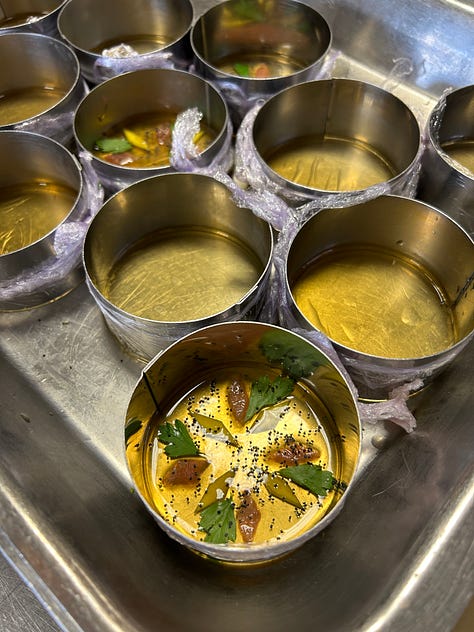


If I’m being honest, the best part about the aspic was the sauce served alongside - sauce gribiche.
Gribiche is a mayonnaise-based sauce — which is also considered a mother sauce. This particular mayo is made using cooked egg yolks instead of raw, which is taken to the next level with mustard, vinegar, diced cornichons, capers, and egg whites. It’s finished off with fresh parsley, chervil, and tarragon. NYT Cooking has a similar recipe if you’d like to give it a try.

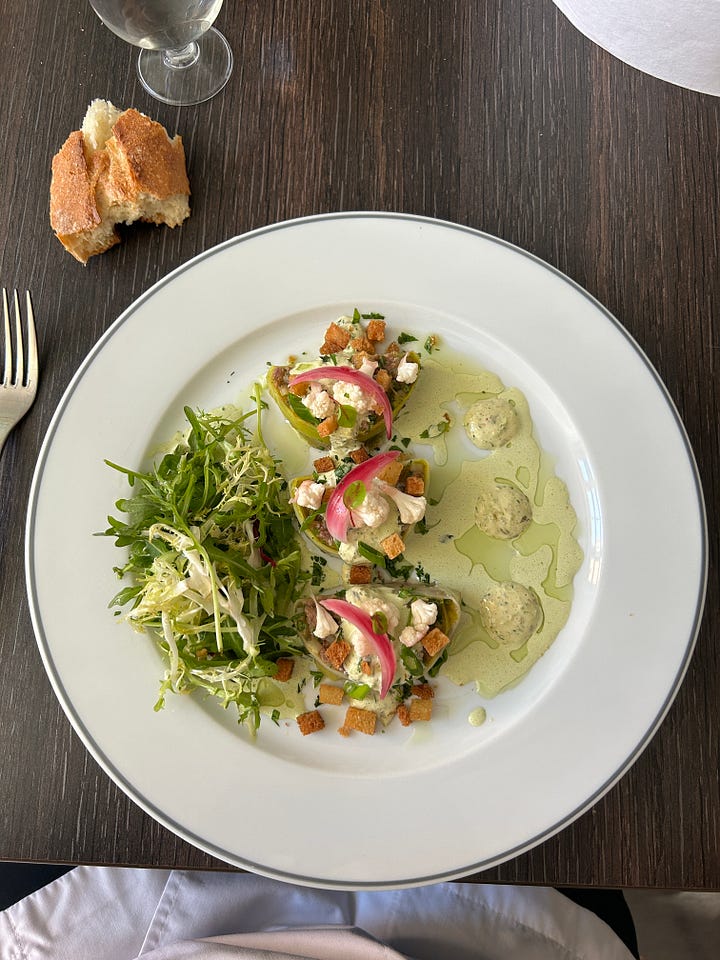
A perfect steak lunch
After two lunches of slightly underwhelming gelatinous beef, we entered the big leagues with Thursday’s menu.
First course: Leeks with ravigote sauce, croutons, artichoke purée, quail eggs
Second course: Artichoke heart topped with a poached egg and hollandaise sauce
Main course: Steak with sauce Bercy, artichoke hearts en persillade
Our veal stock from earlier in the week served as the base for our Bercy sauce: a pan sauce made with butter and shallots, white wine, reduced veal stock, and more butter. We also tackled hollandaise sauce and persillade, which is simply butter, garlic, and parsley - often served with escargots.
Perhaps you’re sensing a theme here — it’s butter.
In France, this type of meal requires a good glass of red wine. Having mentioned to our Chef that I have roots in California’s wine country, I was really pleased to be able to bring a bottle of our family’s wine to taste during lunch — Elan Vineyards’ 2012 Cabernet Sauvignon.
It felt like a full-circle moment to share this piece of myself with the class, who thoroughly enjoyed the wine. There was only enough for each of us to have a small glass, but considering the amount of butter we consumed in one sitting, you can imagine how difficult it was to make it through a 2-hour afternoon lecture about mother sauces and dozens of derivatives.
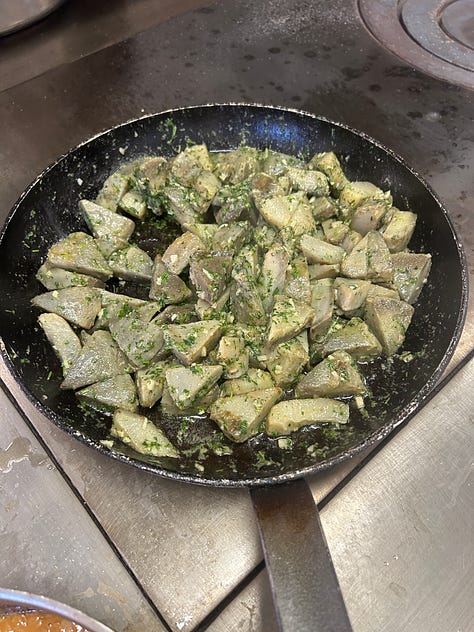
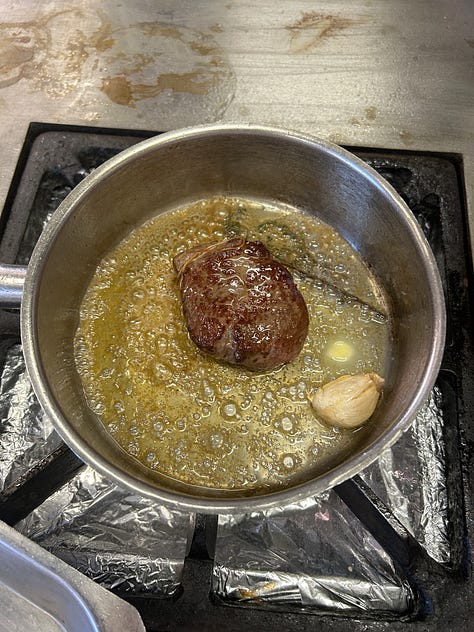


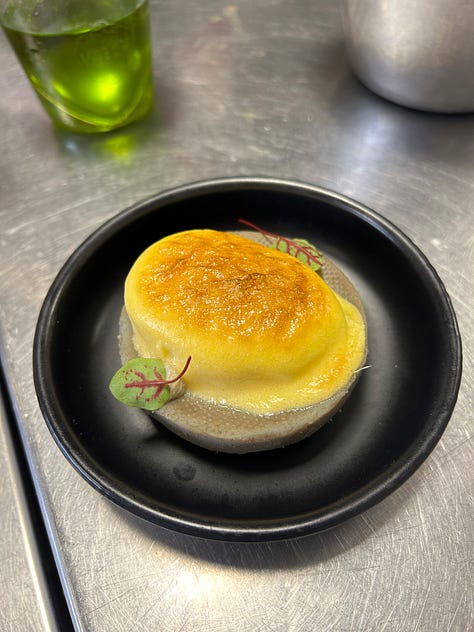
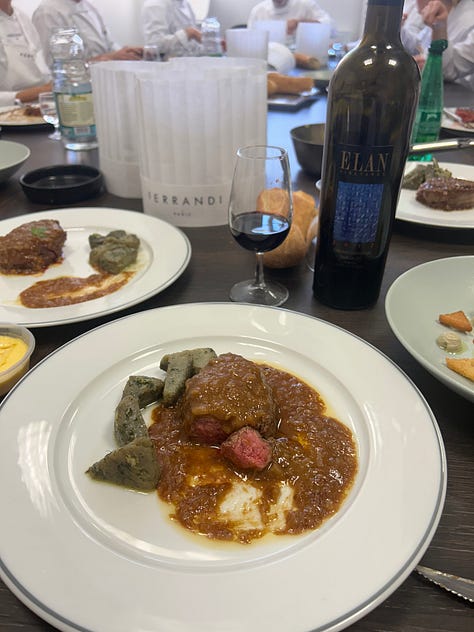
Until next time,
Bisous,
Monique




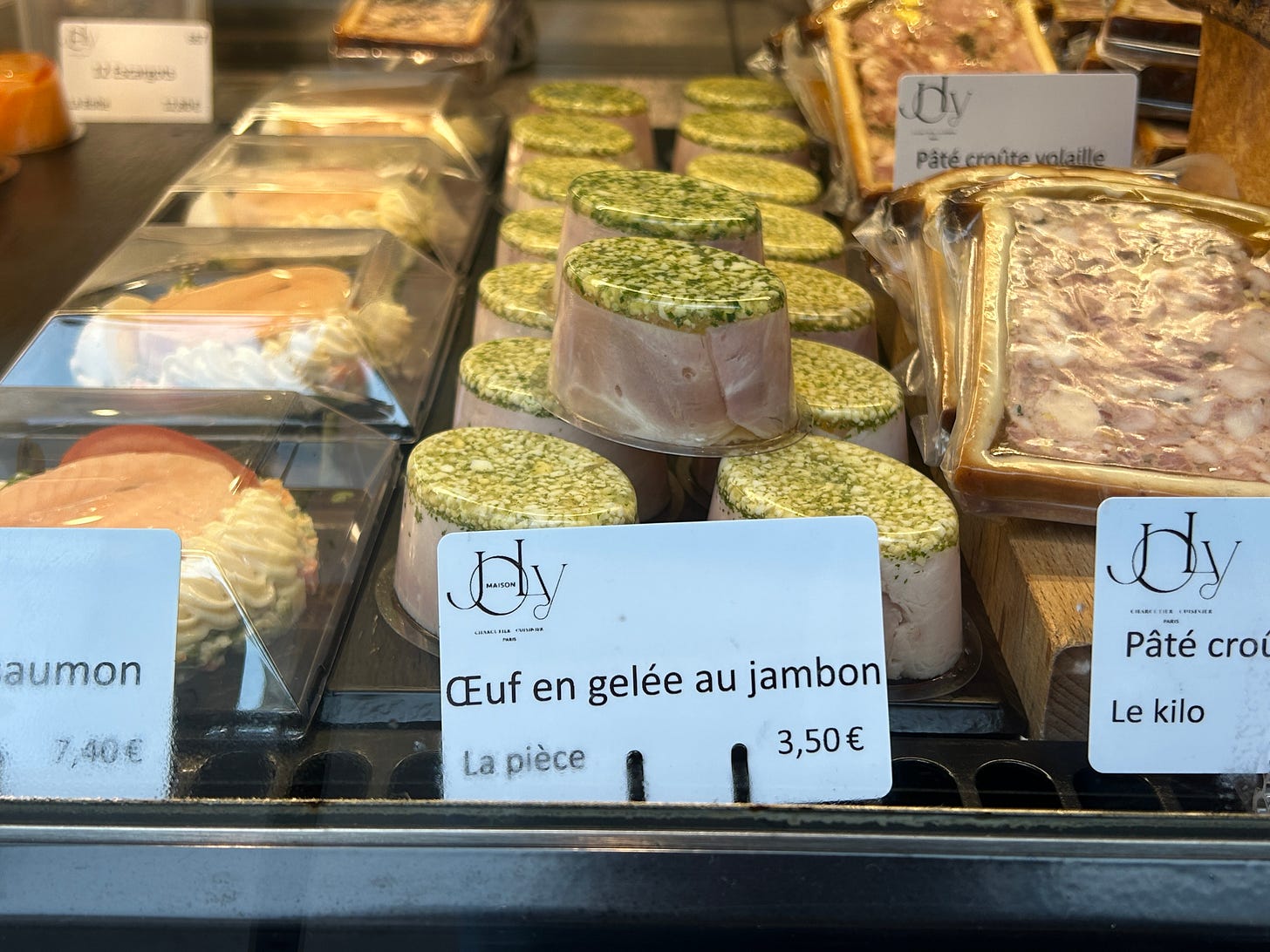
gorgeous photos and writing!! a real treat to read (if not eat) love you
Wonderful!
My grandparents would have sauce gribiche with poached fish that was served cold as a first course